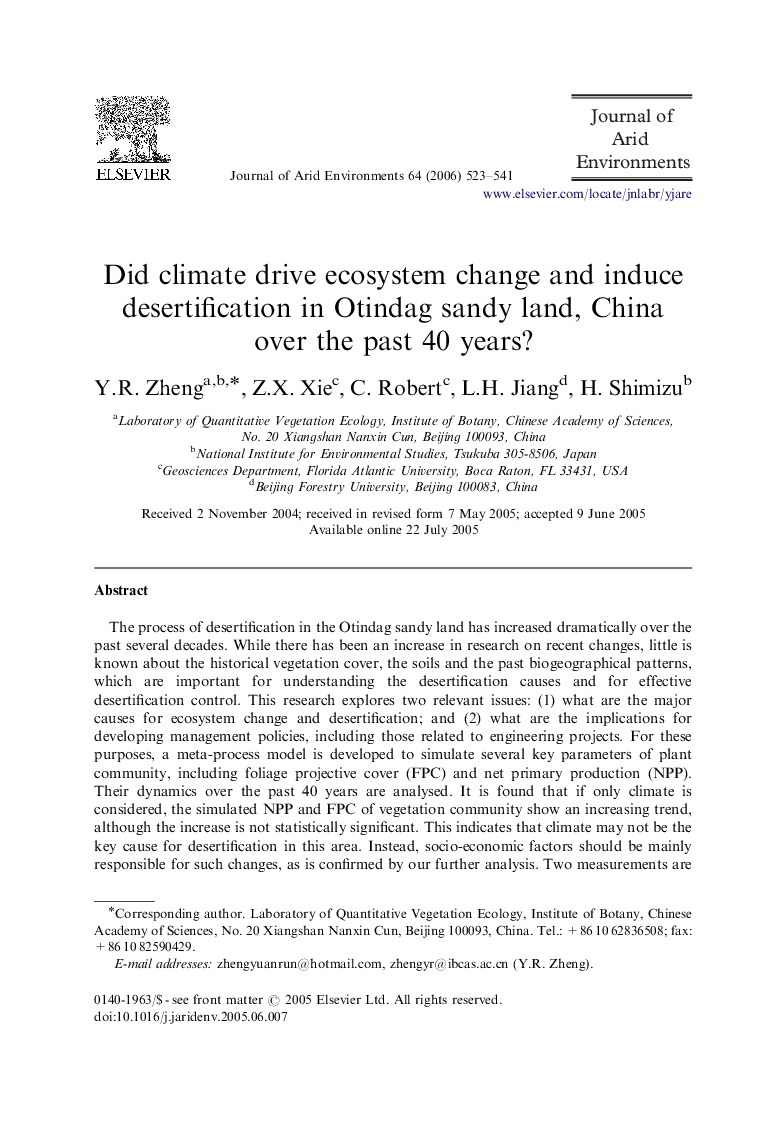| Article ID | Journal | Published Year | Pages | File Type |
|---|---|---|---|---|
| 4394833 | Journal of Arid Environments | 2006 | 19 Pages |
The process of desertification in the Otindag sandy land has increased dramatically over the past several decades. While there has been an increase in research on recent changes, little is known about the historical vegetation cover, the soils and the past biogeographical patterns, which are important for understanding the desertification causes and for effective desertification control. This research explores two relevant issues: (1) what are the major causes for ecosystem change and desertification; and (2) what are the implications for developing management policies, including those related to engineering projects. For these purposes, a meta-process model is developed to simulate several key parameters of plant community, including foliage projective cover (FPC) and net primary production (NPP). Their dynamics over the past 40 years are analysed. It is found that if only climate is considered, the simulated NPP and FPC of vegetation community show an increasing trend, although the increase is not statistically significant. This indicates that climate may not be the key cause for desertification in this area. Instead, socio-economic factors should be mainly responsible for such changes, as is confirmed by our further analysis. Two measurements are proposed for sustainable environment management: development and maintenance of suitable vegetation coverage of at least 46.7% and implementing a reasonable sheep stocking of 1.5 per hectare, respectively.
